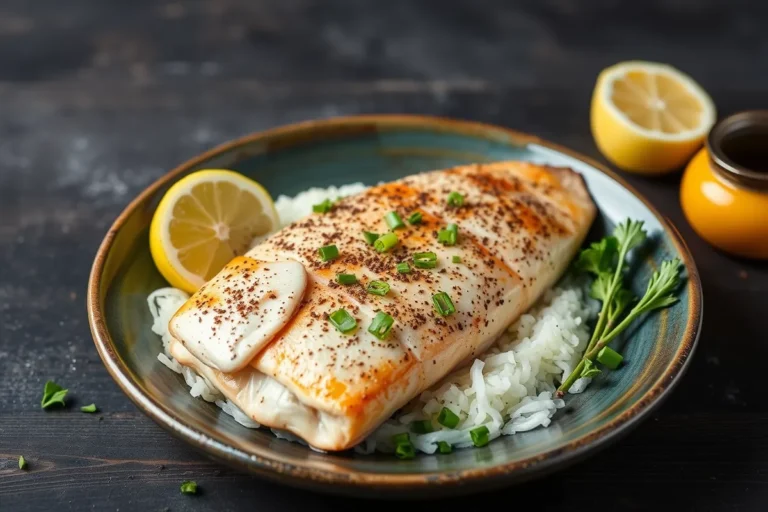Fish, like all pets, require proper nutrition to thrive. Feeding your fish the right food is essential for their growth, coloration, and lifespan. This guide covers everything from understanding their dietary needs to crafting and storing homemade fish food.
Understanding Fish Dietary Needs
Introduction to Fish Nutrition
Feeding fish is not just about throwing pellets into the tank. The right diet ensures:
- Optimal health and longevity.
- Vibrant coloration and activity.
- Reproductive success.
Understanding what fish eat in the wild helps mimic their natural diet for a balanced aquarium ecosystem.
Types of Fish Food
Fish can be broadly categorized based on their dietary preferences:
- Carnivorous fish: Require high protein from sources like insects, shrimp, and fish meal.
- Herbivorous fish: Thrive on plant-based diets including algae and leafy vegetables.
- Omnivorous fish: Enjoy a mix of protein and vegetation, making them more versatile in dietary needs.
Ensuring the correct type of food for your fish species is vital to maintaining their health.
Commercial vs. Homemade Fish Food
Both commercial and homemade fish foods have their merits:
- Commercial foods:
- Pros: Convenient, consistent nutrient levels.
- Cons: Expensive, may contain artificial additives.
- Homemade foods:
- Pros: Cost-effective, customizable, uses fresh ingredients.
- Cons: Time-consuming, requires proper storage.
Homemade options allow for greater control over what your fish consume, ensuring better health and sustainability.
Nutritional Requirements for Freshwater Fish
Freshwater fish need:
- Macronutrients:
- Protein for growth and repair.
- Carbohydrates for energy.
- Fats for insulation and energy reserves.
- Micronutrients:
- Vitamins (A, D, E) for immunity and development.
- Minerals like calcium and phosphorus for skeletal health.
Nutritional Requirements for Saltwater Fish
Saltwater fish often have more specialized dietary requirements:
- Higher protein content due to their active lifestyles.
- Specific amino acids found in marine-based ingredients.
- Trace elements like iodine and magnesium for better osmoregulation.
Importance of a Balanced Diet for Fish Health
An imbalanced diet can lead to:
- Poor growth rates.
- Faded colors.
- Susceptibility to diseases.
Feeding a varied diet ensures your fish receive all essential nutrients for longevity and vitality.
Common Mistakes in Feeding Fish
Avoid these errors:
- Overfeeding: Leads to obesity and water pollution.
- Underfeeding: Causes malnutrition and stunted growth.
- Low-quality ingredients: Often lack nutrients and may introduce contaminants.
Signs of Malnutrition in Fish
Look for:
- Lethargy and reduced activity.
- Faded colors or dull scales.
- Weight loss and emaciation.
- Unusual swimming patterns.
These indicators suggest dietary adjustments are needed.
Benefits of Homemade Fish Food
Making fish food at home offers:
- Cost savings in the long run.
- Ability to tailor ingredients for specific fish species.
- Use of high-quality, fresh components.
Essential Ingredients in Fish Food Recipes
The best recipes include:
- Protein sources: Shrimp, fish meal, insects.
- Plant-based options: Spinach, zucchini, spirulina.
- Binders: Gelatin or agar-agar to hold food together.
- Supplements: Vitamin drops or fish oils for added nutrition.
Crafting Homemade Fish Food Recipes
Homemade fish food offers a personalized and cost-effective solution for keeping your aquatic pets healthy and happy. This section delves into the tools, recipes, and techniques to create nutritious meals for various fish types.
Tools and Equipment for Making Fish Food
To make fish food at home, you’ll need basic kitchen tools, including:
- Blenders: For pureeing ingredients into a smooth consistency.
- Mixing bowls: To combine and blend components.
- Molds or trays: Useful for shaping food into bite-sized portions.
- Storage containers: Airtight containers for freezing or refrigerating food.
- Drying equipment: A food dehydrator or oven for making flakes or dry food.
Investing in these tools ensures that the preparation process is efficient and hygienic.
Selecting Ingredients for Carnivorous Fish
Carnivorous fish thrive on high-protein diets. Key ingredients include:
- Raw shrimp: Rich in protein and omega-3 fatty acids.
- Fish fillets: Low-fat options like cod or tilapia.
- Insects and larvae: Mealworms or black soldier fly larvae are excellent choices.
- Fish meal: A nutrient-dense base for many recipes.
Blending these ingredients into a paste ensures easy consumption and digestion for carnivorous species.
Crafting Recipes for Herbivorous Fish
Herbivorous fish require plant-based diets rich in fiber and nutrients. Ingredients include:
- Algae and spirulina: Packed with vitamins and minerals.
- Leafy greens: Spinach, kale, or lettuce.
- Vegetables: Zucchini, peas, and cucumber are easily digestible.
- Plant-based proteins: Soy or chickpea flour can supplement their diet.
Blend these ingredients with a small amount of water and binders like gelatin to create nutritious pellets or cubes.
Recipes for Omnivorous Fish
Omnivorous fish need a balance of protein and plant-based nutrients. A typical recipe might include:
- Protein sources: Shrimp, fish meal, or eggs.
- Vegetables: Carrots, spinach, and peas.
- Carbohydrates: Cooked rice or oatmeal for energy.
Mix these ingredients thoroughly, shape them into pellets or flakes, and dry them for long-term storage.
Adding Vitamins and Supplements
To ensure optimal health, consider these supplements:
- Vitamin drops: A, D, and E are crucial for immune health.
- Fish oil: Enhances coloration and provides essential fatty acids.
- Calcium powder: Supports skeletal development, especially in young fish.
These can be mixed into recipes or sprinkled over finished food before feeding.
Gelatin-Based Fish Food Recipes
Gelatin-based recipes are versatile and easy to prepare. Here’s a simple method:
- Prepare ingredients: Blend fish, shrimp, or vegetables into a puree.
- Dissolve gelatin: Mix unflavored gelatin with warm water.
- Combine: Mix the gelatin with the puree and pour into molds.
- Set: Refrigerate until firm, then cut into small pieces.
This recipe works for all fish types and can be customized with different ingredients.
Flake Food Recipes
Creating homemade flake food is simple with a dehydrator or oven:
- Blend ingredients into a fine paste.
- Spread thinly on parchment paper.
- Dehydrate at a low temperature until crisp.
- Break into small flakes.
Flake food is ideal for omnivorous and small fish species.
Freeze-Dried and Frozen Food Preparations
Preserving nutrients is key when preparing food for long-term storage:
- Freeze-drying: Retains more nutrients compared to other methods but requires specialized equipment.
- Freezing: Blend and portion food into ice cube trays for easy storage.
- Vacuum sealing: Prevents freezer burn and contamination.
Both methods keep homemade food fresh and nutrient-dense.
Specialized Diets for Breeding Fish
Breeding fish require high-protein diets to support spawning and fry development. Ingredients include:
- Egg yolks: Soft and rich in protein.
- Artemia (brine shrimp): Highly nutritious for fry.
- Live cultures: Microworms or daphnia stimulate feeding in young fish.
Frequent, small feedings ensure fry receive consistent nutrition during early development.
Seasonal and Regional Variations in Fish Diets
Adapt recipes to local conditions and ingredients:
- Seasonal vegetables: Use what’s fresh and affordable.
- Regional seafood: Incorporate local fish, shrimp, or mollusks.
- Tropical regions: Utilize fruits like papaya or mango for omnivorous fish.
These variations not only save costs but also provide diverse nutrients.
Storing and Feeding Homemade Fish Food
Homemade fish food requires proper storage and feeding practices to ensure your fish enjoy the full nutritional benefits. This section outlines techniques for preserving food, feeding schedules, troubleshooting, and fostering sustainable practices.
Proper Storage Techniques for Homemade Fish Food
To maintain freshness and nutrient quality, it’s crucial to store fish food properly. Here are some key tips:
- Freezing: Store gelatin-based or frozen food in ice cube trays. Transfer to airtight freezer bags after freezing.
- Refrigeration: Short-term storage for fresh food (1-2 days) in sealed containers.
- Dry storage: Flake or freeze-dried food should be stored in airtight jars away from heat and light.
- Labeling: Clearly mark preparation dates to monitor shelf life.
Proper storage prevents contamination and spoilage, ensuring the safety of your fish.
Feeding Frequency and Portion Sizes
Overfeeding or underfeeding can lead to health problems or poor water quality. Consider these guidelines:
- Carnivorous fish: Feed once daily, providing enough food to be consumed within 3-5 minutes.
- Herbivorous fish: Offer smaller portions 2-3 times daily, as they graze naturally.
- Omnivorous fish: Feed 1-2 times daily with balanced portions.
Adjust feeding based on the species, size, and activity level of your fish to prevent waste and maintain water clarity.
Monitoring Fish Health After Recipe Changes
When introducing new homemade food, observe your fish closely:
- Behavioral changes: Increased activity or lethargy may indicate acceptance or issues.
- Coloration: Enhanced vibrancy suggests improved nutrition.
- Waste output: Consistent, normal waste indicates good digestion.
Gradual transitions (mixing new food with existing food) minimize stress and allow your fish to adapt.
Troubleshooting Common Problems with Homemade Fish Food
If issues arise, consider these solutions:
- Food rejection: Modify the recipe or texture to match your fish’s preferences.
- Cloudy water: Reduce feeding amounts or adjust binders in recipes.
- Nutrient deficiencies: Add supplements like vitamins, calcium, or fish oils.
Tweaking recipes ensures better compatibility with your fish’s dietary needs.
Sustainable Practices in Fish Food Preparation
Eco-friendly practices benefit both your wallet and the environment:
- Local ingredients: Reduce carbon footprint by sourcing regional seafood and produce.
- Byproducts: Use trimmings or leftovers (e.g., fish skins) from human meals.
- Minimal packaging: Homemade food eliminates reliance on single-use plastics from commercial options.
Sustainability supports a healthier aquarium and ecosystem.
Recipes for Specific Fish Species
Customizing recipes for specific species enhances their health and longevity. Here are examples:
- Goldfish: High-fiber recipes with peas, carrots, and minimal protein.
- Cichlids: Protein-heavy diets with shrimp, fish meal, and spirulina.
- Bettas: Rich in protein with mosquito larvae, brine shrimp, and egg yolk.
Researching species-specific needs helps create ideal diets tailored to your fish.
How to Introduce New Food to Fish
Fish can be hesitant to accept new food. Follow these steps:
- Gradual transition: Mix small amounts of new food with familiar options.
- Observe: Monitor acceptance and any digestive changes.
- Persistence: Introduce the new food consistently at feeding times.
Patience ensures a successful dietary shift without stressing your fish.
Enhancing Fish Color with Diet
Certain ingredients naturally enhance pigmentation, including:
- Carotenoids: Found in carrots, spirulina, and shrimp, they boost red and orange hues.
- Astaxanthin: Found in krill and algae, enhances vibrant red coloration.
- Leafy greens: Promote rich greens in herbivorous fish.
Regular inclusion of these ingredients amplifies your fish’s natural beauty.
Economic Benefits of DIY Fish Food
Homemade fish food is significantly more cost-effective than commercial options:
- Bulk ingredients: Shrimp, vegetables, and grains are cheaper when bought in quantity.
- Reusable storage: Eliminates continuous packaging costs.
- Customization: Reduces the need for multiple commercial products for different fish.
Over time, homemade food saves money while providing superior quality and nutrition.
Encouraging Community Sharing of Recipes
Sharing fish food recipes fosters innovation and collaboration. You can:
- Join forums: Engage with online communities like The Planted Tank Forum or aquarium Reddit groups.
- Create content: Post your recipes on blogs or social media to inspire others.
- Local clubs: Participate in fishkeeping societies to exchange ideas and experiences.
Community engagement enriches your hobby and benefits others in the fishkeeping world.
FAQs:
What is the best homemade food for fish?
The best homemade fish food depends on the species. For omnivorous fish, a mix of vegetables, protein, and spirulina works well. Carnivorous species prefer a protein-rich diet, while herbivores thrive on plant-based meals.
How do you make homemade fish feed?
Homemade fish feed can be made by blending ingredients such as vegetables, shrimp, and spirulina, then binding them with gelatin. Freezing or baking the mixture creates easy-to-serve portions.
What are the best ingredients for fish food?
The best ingredients include spinach, peas, shrimp, fish fillets, spirulina powder, and gelatin. Fresh, natural ingredients are key to a nutritious diet.

